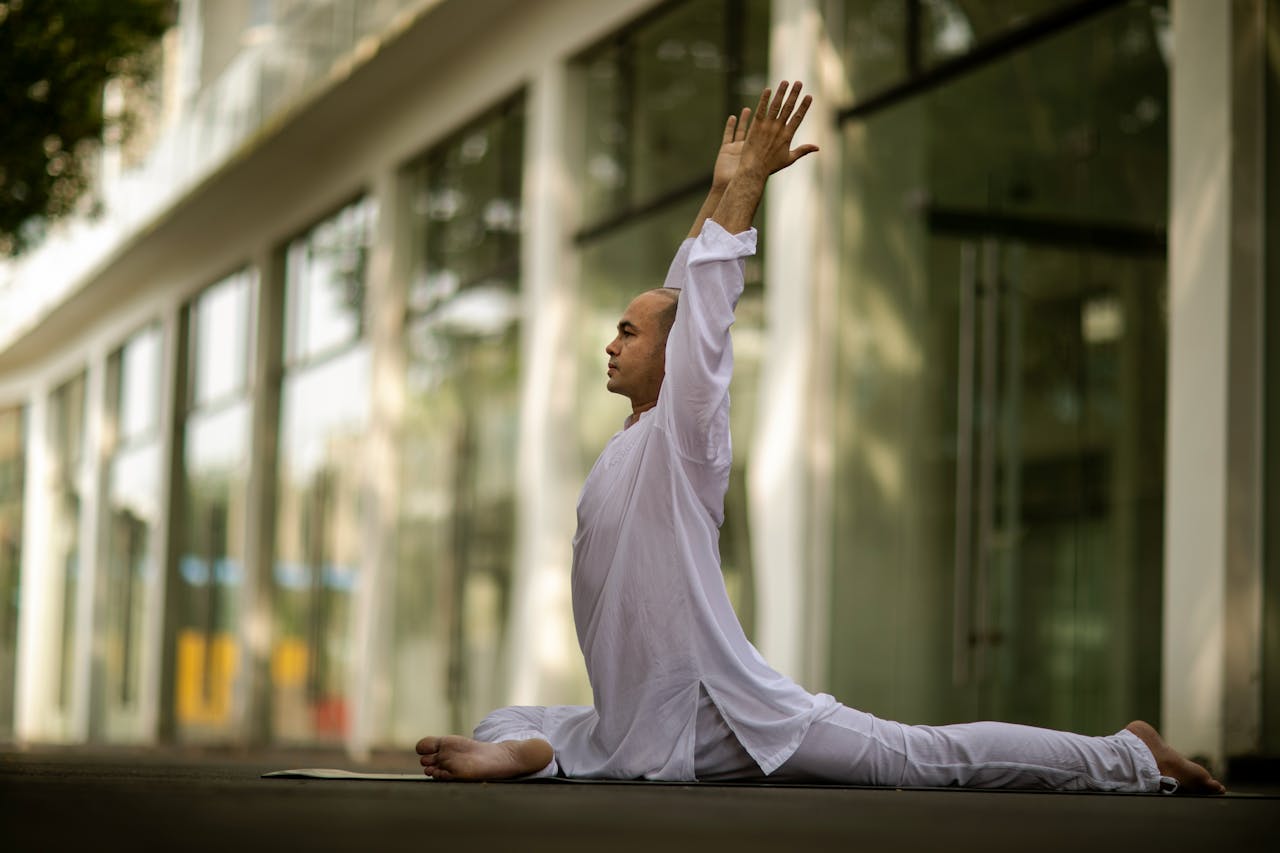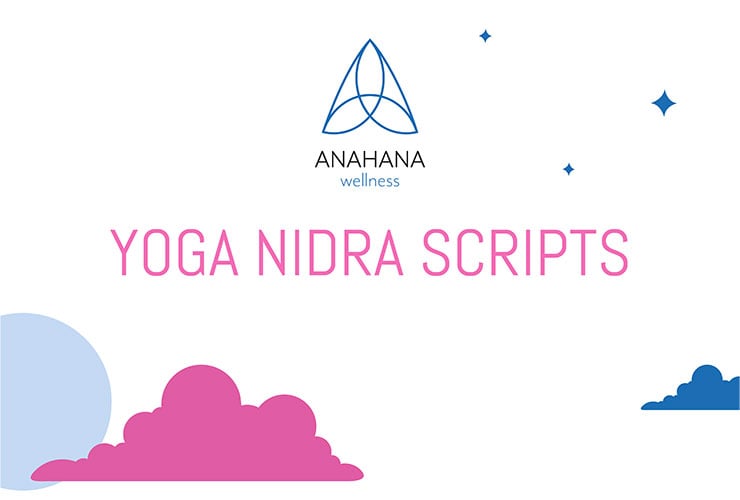
Table of Contents
A Yoga Nidra script is read by a yoga instructor when guiding a Yoga Nida mediation.
Yoga Nidra Scripts Explained
Unlike other forms of meditation, yogic sleep is always practiced with the verbal direction of a live or recorded instructor. It is a systematic practice where the instructor guides the students to deep relaxation. These instructions come in the form of Yoga Nidra scripts, of which there is an endless number.

There is no predetermined structure for writing scripts. Instructors often write them according to how they individually wish to perform their Yoga Nidra meditation sessions. Some Yoga Nidra scripts are long; others are short. Some have a unique focus on helping practitioners improve their stress levels; some are more general.
Most all Yoga Nidra scripts begin similarly. This first "phase" is formulated to help practitioners descend into the deep state of relaxation between sleep and wakefulness. The instructor's goal is to keep practitioners awake — but only barely — through their voice and instruction.
The instructor will instruct practitioners to mentally imagine and focus on each part of their body in succession (head, jaw, shoulders, stomach, hips, etc.). Bringing awareness to the body in this systematic manner helps one feel their whole body weight and sync their mental and emotional state with their physical presence.
The next phase will generally then shift to guided visualization.
Visualizations may be colors, visions of remarkably calming settings or environments (waves on a beach, gently falling snow), or actions such as the physical body floating slightly off the ground or being cleansed by light.
After visualization, practitioners may be instructed to slowly and progressively begin moving their limbs and body to reawaken.
Sample Yoga Nidra Script
Step 1: Prepare Yourself
Begin with your body lying either on the ground or on a mat. Put a cushion beneath your knees and a small rolled-up towel beneath the nape of your neck. You may cover yourself in a blanket, if you wish, and cover your eyes if it is very bright. Place one hand on your belly and the other on your chest. Close your eyes.
Step 2: Focus on Breathing
Begin by bringing your awareness to your breath. Take three deep breaths in and out, feeling your belly rise each in-breath and deflating your belly with each out-breath. Return to your natural breath — whatever pace feels most comfortable. Then relax your arms down at your sides, with palms turned up if comfortable.
Step 3: Focus on the Body (Body Scan)
If you feel your mind racing with stress and worry, let go of these words and labels. Right now, we’re going to put all of our focus on the body.
Where is your body touching the ground, and what does this sensation feel like? Feel your heels on the ground and send your awareness to first your left and then your right heel.
Feel each hip where it grounds itself to the floor. Send your awareness to each of these parts and equalize them so that you feel equally grounded. Then as you breathe in, send your attention to your entire body as a whole. Allow gravity to take it. Give yourself over to the force beneath you and surrender your weight to the earth.
Step 4: Progressive Muscle Relaxation
Bring your awareness to the soles of your feet. Now, just the sole of your left foot. Let it instantly release and slacken. Let gravity have more of it. Feel the weight of it, and think, “let go.”
[At this point, your instructor will progressively go through each of your body parts from the soles of your feet to the top of your head, following the same pattern of awareness and letting go.]
Step 5: Visualization
Imagine the color purple. Purple all around you, soft and light. Now, allow the color to fade away slowly. Replace the purple with the warm glow of the sun. You are lying on the grass of a beautiful field, lit with rays of sunshine. The warmth bathes you and is the perfect temperature. The light sound of wind through the trees puts you at ease.
Imagine yourself smiling. See the soft waves of a lake lapping against the shore, covering, then exposing the smooth, soft surfaces of hundreds of sparkling stones. Breathe in the serenity of the moment. Give yourself over to it. You are heavy. Your body is one with the soft glow of the sun. You’re being breathed. You’re being reenergized and refueled. The space embraces and cradles you.
Step 6: Sankalpa
State your Sankalpa, your heart’s deepest longing, or a positive statement, repeating it to yourself in the present tense internally, three times. Feel it, now, as the present truth. And so it is.
Step 7: Reawaken
Let’s begin ascending to a waking state. Begin by softly rubbing the pads of your forefingers against your thumbs on either hand. Gently flex your toes back and forth. Very carefully, unleash your knees from their positions and bring each one toward your chest, one at a time.
Continue deep breathing. Gently open your eyes. Slowly, roll to one side, and brace your hands on the floor. Pushing into the ground with your hands, move your upper body to a seated position and softly wiggle your shoulders and spine. Remove the cushion from beneath your knees. Dip your chin and allow your neck to soften. Feel great relief, gratitude, and receptivity.
Additional Notes
The yoga teacher will do a full-body tour to help the practitioner feel their entire physical presence. Here are some of the body parts you can expect to focus on while practicing Yoga Nidra.
Lower body:
- Fist toe
- Second toe
- Third toe
- Fourth toe
- Left big toe
- Left leg
- Left calf
- Left knee
- Left thigh
- Whole left leg
- Right thigh
Upper body:
- Ring finger
- Third finger
- Fourth finger
- Middle finger
- Left thumb
- Left hand
- Left wrist
- Left arm
- Left elbow
- Upper arm
- Left shoulder blade
- Right wrist
- Right upper arm
- Right shoulder blade
Head
- Lower lip
- Upper lip
- Left inner cheek
As the practitioner focuses on these body parts, it will expose the subconscious and unconscious dimensions of the entire body. This is incredibly healing for the body and can support one's ability to exist more mindfully in their own physical presence as they carry out daily activities.
Yoga Nidra scripts can come in all different styles depending on the goal of the session and the teacher.
Disclaimer
As with any type of exercise, yoga does not come without its own risks. Practicing yoga should be done with care and respect, reducing the risk of injury.
If you are suffering from any medical conditions or are unsure which type of yoga or exercise is best suited for you and your conditions, we advise you to consult a medical professional or your doctor.
References
Progress in Brain Research - Volume 244
A Beginner's Guide to Yoga Nidra. Beginner's Guide to Yoga Nidra.
Cognitive Brain Research - Volume 13, Issue 2
Yoga Nidra and Sleep. Wholesome Resources
International Journal of Community Medicine and Public Health
The Journal of Alternative and Complementary Medicine
American Psychological Association
Yoga Nidra 101: The Practice of Psychic Sleep. Be Yogi.
Yoga Nidra for Sleep: The Benefits of Guided Yoga Nidra Meditation. Yoga Journal
Disclaimer
The contents of this article are provided for informational purposes only and are not intended to substitute for professional medical advice, diagnosis, or treatment. It is always recommended to consult with a qualified healthcare provider before making any health-related changes or if you have any questions or concerns about your health. Anahana is not liable for any errors, omissions, or consequences that may occur from using the information provided.

By: Anahana
The Anahana team of researchers, writers, topic experts, and computer scientists come together worldwide to create educational and practical wellbeing articles, courses, and technology. Experienced professionals in mental and physical health, meditation, yoga, pilates, and many other fields collaborate to make complex topics easy to understand. Anahana is also home to specialists in crystals, tarot, angel numbers, astrology, life path numbers, zodiac signs, and horoscopes. By combining evidence-based wellness with spiritual and energetic practices, the team offers clear, trustworthy guidance for both mind-body health and modern spirituality.